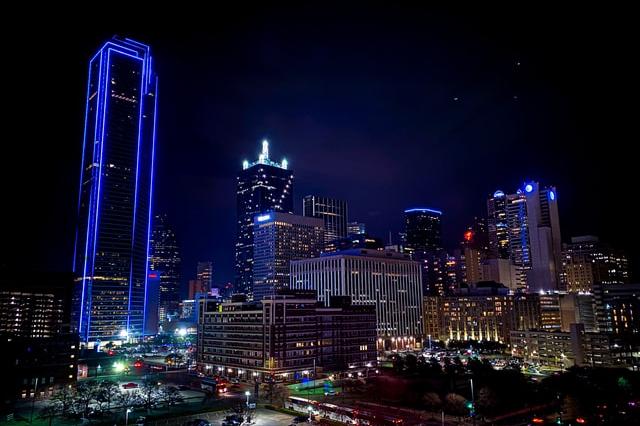
Downtown Dallas, Texas at night
Remember the widespread power outages in Texas last February that left 4.5 million homes and businesses without power at their peak? Now, nearly a year later, some utility grid experts warn the same situation could repeat itself. Moreover, a cold snap or winter storm could leave the Texas grid vulnerable yet again.
What caused the 2021 Texas power crisis?
In February, unseasonably cold temperatures, combined with a series of snow and ice storms hit Texas, creating a sharp increase in energy demand due to a heightened need for space heating. Almost 40 percent of Texans heat their homes with natural gas and the remainder with electricity, so demand for the two skyrocketed with frigid temperatures.
But, about half of Texas’ power comes from natural gas, and the cold snap caused natural gas fields to close and pipelines to freeze, right as demand increased. In addition, some coal, nuclear and wind power plants were also shuttered or were forced to decrease their output. It was a perfect storm for widespread failures as the state’s grid nearly completely collapsed.
In addition to widespread power outages, many Texans were left without safe drinking water and needed to boil the tap water or find bottled water. Sadly, 151 people perished due to the storm itself, and Buzzfeed News estimates that hundreds of medically vulnerable people died from the power outage. For example, some used their vehicles in garages to stay warm, leading to carbon monoxide poisoning. Others died from the cold itself.
This catastrophe highlights how the Texas utility grid is not resilient during extreme weather and the catastrophic impacts of being unprepared. This concept is especially troublesome because climate change will likely bring more problems.
Why is the Texas grid still vulnerable?
Some experts warn the same situation could repeat itself, especially with the right weather conditions. But, wasn't this situation corrected after the hard lesson in February 2021, wasn’t this situation corrected?
As some energy experts are saying otherwise, Governor Greg Abbot is reassuring Texans. “I can guarantee the lights will stay on,” Abbott told FOX 7 in Austin during Thanksgiving week. “I signed almost a dozen laws that make the power grid more effective.” He is referring to multiple laws he signed that have an impact on the Electric Reliability Council of Texas (ERCOT).
However, according to some energy experts, new restrictions allow too much wiggle room, and some of the needed upgrades could take months or years to implement. Two of the biggest hurdles are weatherizing power plants and ensuring a consistent natural gas supply during frigid temperatures, but the restrictions don’t adequately address these needed upgrades.
The Texas power grid is separate from the national power grids that serve the eastern and western United States. Thus, it is outside of the jurisdiction of the Federal Energy Regulatory Commission (FERC) and therefore avoids many federal regulations. The Texas Legislature creates the laws that oversee ERCOT, which manages most of the Texas power grid. Thus, the lack of resiliency with the Texas grid is largely outside of the domain of the federal government.
“If we see a recurrence of the storm we saw last year, people should probably be worried,” director of Public Citizen’s Texas office Adrian Shelley told the Texas Tribune. The Texas power grid just wasn’t created with such weather in mind.
“Extreme weather events, such as the one in February 2021, are unfortunately becoming more commonplace and the electricity ecosystem needs to come together to plan for and prepare to operate under more extreme, longer duration, and wide area weather events,” Jim Robb, the president and CEO of North American Electric Reliability Corp., said in a statement.
Just as many Texans must prepare for hurricanes, perhaps the same is true during the heating season and potential related power outages. Households having operating carbon monoxide detectors, a supply of safe drinking water, and a strategy for keeping warm is a good start.
Some consider the Texas power grid failure a cautionary tale of climate change and how infrastructure can fail from extreme weather. Often, infrastructure wasn’t created with a turbulent climate in mind, thus it fails when weather strays from the previous norm.
Image credit: Zack Brame via Unsplash

Sarah Lozanova is an environmental journalist and copywriter and has worked as a consultant to help large corporations become more sustainable. She is the author of Humane Home: Easy Steps for Sustainable & Green Living, and her renewable energy experience includes residential and commercial solar energy installations. She teaches green business classes to graduate students at Unity College and holds an MBA in sustainable management from the Presidio Graduate School.














